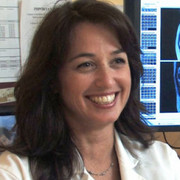Treatment
Most women with fibroids have no symptoms and do not need treatment. Your doctor may recommend "watchful waiting." This is done to monitor the size and growth of the fibroids at regular intervals using ultrasound.
Treatments include:
Pain Medication
Over-the-counter pain pills ease mild symptoms. Prescription pain relievers may be needed. Nonsteroidal anti-inflammatory drugs reduce inflammation and help relieve cramping.
Hormonal Therapy
Hormone medications, which decrease estrogen levels, are an option if you are not trying to become pregnant. Synthetic hormones create an artificial menopause. The drugs shrink fibroids. The drugs also lessen the pain by decreasing the supply of estrogen to the uterus. However, fibroids can return once you stop taking the drugs. These drugs are often used to reduce fibroid size prior to surgery.
Surgery
Surgery is considered if:
- The uterus becomes extremely large.
- The fibroids are interfering with fertility.
- Symptoms are severe.
Surgical procedures include:
Myomectomy
Myomectomy is the removal of the fibroids only and leaving the uterus intact. This can be done by:
- Open surgery that involves a single large abdominal incision
- Laparoscopy —using a lighted fiberoptic tube and requiring only a few small incisions
- Hysteroscopy—which involves the insertion of a hysteroscope through the cervix into the uterine cavity
Because it preserves the uterus, myomectomy is commonly performed on younger women who may want to have children. However, conceiving may still be hard. The surgery is less successful if there are many fibroids, because some may grow back.
Uterine Fibroid Ablation
An alternative to surgical removal, uterine fibroid ablation (also called myolysis) uses heat to disrupt the blood supply to the fibroid. This causes the fibroid to shrink.
Total Hysterectomy
Total hysterectomy is the removal of the entire uterus. This may be done through a vaginal or abdominal incision. Hysterectomy is the definitive treatment for fibroids. But you will be unable to have children if you have this surgery.
Nonsurgical Options
Uterine Fibroid Embolization
Fibroids need a good supply of blood to grow. Without blood, the tumors shrink. Doctors can perform a uterine fibroid embolization (also called uterine artery embolization) to stop the blood flow. The doctor makes small cuts in your groin. She threads a catheter into your arteries that supply your uterus with blood. Tiny particles of plastic or gelatin are passed through the catheter. The particles make their way to the fibroids and block blood from reaching the tumors.
Focused Ultrasound Therapy
Focused ultrasound therapy is a noninvasive treatment using an MRI. This procedure may not be ideal for patients who are very overweight, have very large fibroids, or have extensive scars from prior abdominal surgeries.
If you are diagnosed with uterine fibroids, follow your doctor's instructions .
Please be aware that this information is provided to supplement the care provided by your physician. It is neither intended nor implied to be a substitute for professional medical advice. CALL YOUR HEALTHCARE PROVIDER IMMEDIATELY IF YOU THINK YOU MAY HAVE A MEDICAL EMERGENCY. Always seek the advice of your physician or other qualified health provider prior to starting any new treatment or with any questions you may have regarding a medical condition. Copyright © 2024 EBSCO Publishing All rights reserved.
 Pelvic Pain: Uterine Fibroids vs. Endometriosis
Pelvic Pain: Uterine Fibroids vs. Endometriosis







